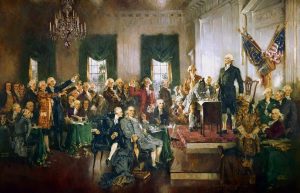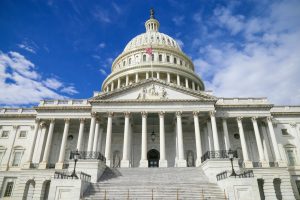Fort Knox Faces Historic Audit as Precious Metals Surge and Markets Tighten

February 22, 2025 – The United States Bullion Depository at Fort Knox, Kentucky, long shrouded in secrecy and speculation, is set to undergo a comprehensive audit under the direction of President Donald Trump and his administration. The move, confirmed by the President this week, has ignited fervent discussion across financial markets, precious metals communities, and the general public. With gold prices soaring past $2,900 per ounce and a notable influx of precious metals shipments to the U.S. in recent months, the timing of this audit raises critical questions about the nation’s gold reserves, the integrity of global markets, and the factors driving the meteoric rise of metals like gold, silver, and even copper.
A Presidential Push for Transparency
The decision to audit Fort Knox comes after years of calls from lawmakers, investors, and citizens for greater transparency regarding the U.S. gold reserves, which are officially reported at 8,133 metric tons—over 4,580 tons of which are stored at Fort Knox. President Trump, alongside influential figures like Elon Musk and Senator Rand Paul (R-KY), has championed the initiative, with Musk even proposing a live-streamed walkthrough of the facility to verify its contents. The last comprehensive inspection of Fort Knox’s gold occurred in 1953, with a partial audit in 1974, leaving decades of uncertainty about the actual state of America’s bullion.
The administration’s move has been met with both enthusiasm and skepticism. Treasury Secretary Scott Bessent, in a recent Bloomberg TV interview, downplayed rumors of missing gold, asserting, “All the gold is there,” while dismissing speculation about revaluing the reserves as a fiscal windfall strategy. Nonetheless, the President’s insistence on a full tally and assay of the gold has fueled speculation that the audit could reveal discrepancies—or confirm the reserves as a cornerstone of economic stability.
Surge in Precious Metals Shipments

Adding intrigue to the audit is a dramatic increase in precious metals shipments to the U.S. over the past few months. Industry analysts report a surge in gold and silver imports, with some suggesting that central banks and financial institutions are stockpiling physical metal ahead of potential market shifts. Reports of extended delivery times for spot gold transactions—stretching from two days to as long as 70 days—signal a tightening supply chain. Meanwhile, major refiners like Argo-Heraeus have suspended sales of certain gold bars, hinting at a scramble to secure physical stocks.
Some market observers speculate that this influx could be tied to the impending Fort Knox audit, with the U.S. possibly bolstering its reserves to present a robust picture. Others argue it reflects broader global trends, as nations like China and Russia continue to amass gold amid waning confidence in fiat currencies.
Physical Gold Shortage Hits Markets
The audit announcement coincides with a pronounced shortage of physical gold in markets and clearing facilities worldwide. Professional dealers and bullion banks report dwindling inventories, with delivery delays disrupting the once-fluid gold trade. This scarcity has pushed gold prices to a record $2,954 per ounce earlier this week, though they later moderated to $2,925 following Bessent’s comments. Silver, too, has climbed, hovering near $34 per ounce, while copper—a key industrial metal—has seen gains driven by supply constraints and rising demand in green energy applications.
The physical shortage has sparked concerns among investors, with some pointing to manipulation or over-leveraging in paper gold markets. The contrast between the transparent, blockchain-verifiable nature of cryptocurrencies like Bitcoin and the opaque gold market has only amplified calls for the Fort Knox audit, seen by some as a bullish signal for alternative assets.
The $42 “Audit” Price Mystery
Central to the Fort Knox story is the peculiar valuation of U.S. gold holdings. Officially, the Treasury pegs its reserves at a “book value” of $42.22 per ounce, a figure unchanged since 1973, yielding a total valuation of just $6.22 billion. At current market prices, however, the Fort Knox stash alone could be worth over $425 billion—a disparity that has long puzzled analysts and fueled conspiracy theories. Critics argue this outdated price reflects a refusal to acknowledge gold’s modern role, while others see it as a relic of the post-gold standard era, when the U.S. sought to downplay the metal’s monetary significance.
A revaluation to market rates could theoretically inject hundreds of billions into the Treasury, reducing reliance on debt issuance. However, Bessent has dismissed such notions, emphasizing fiscal strategies beyond gold repricing. Still, the $42 figure remains a lightning rod, symbolizing decades of opacity that the audit aims to address.
Factors Driving Precious Metals Prices
Beyond the Fort Knox saga, several factors are propelling precious metals prices skyward. Central bank buying—led by nations like China, India, and Russia—has outpaced expectations, with Goldman Sachs recently raising its year-end gold forecast to $3,100 per ounce. Geopolitical tensions, inflationary pressures, and a weakening U.S. dollar have further burnished gold’s appeal as a safe-haven asset. Silver’s dual role as both a monetary and industrial metal ties its rise to technological demand, while copper’s price reflects supply disruptions and the global push for electrification.
Recycling efforts, particularly from old electronics and machinery, have also gained traction as a secondary source of precious metals. With primary mining struggling to keep pace, salvaging gold, silver, and copper from discarded devices offers a sustainable—if limited—supply boost.
A Call to Action: Secure Your Wealth
As the Fort Knox audit looms and precious metals markets tighten, now may be the time to consider safeguarding wealth through tangible assets. Gold and silver remain timeless hedges against uncertainty, while copper’s industrial relevance adds a practical dimension to investment. For those unable to buy bullion outright, recycling old electronics—rich in trace amounts of gold, silver, and copper—presents an accessible entry point. From outdated phones to obsolete machinery, these items can be processed through reputable refiners, turning clutter into value.
With the world watching Fort Knox, the stakes for financial stability have never been higher. Whether you’re an investor or a concerned citizen, securing precious metals by any reasonable means could prove a prudent step in an increasingly unpredictable economic landscape. Act now—before the vault doors open and the markets react.







More Stories
Universal’s New “Celestial Park”: A Mythic Park Where Time, Spirit, and Shadow Converge
New Breakthrough for Brain and Spinal Cord Gene Delivery Systems
How the Child Support System Violates the U.S. Constitution